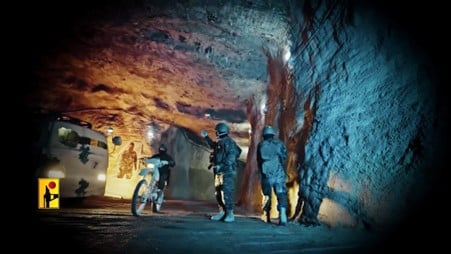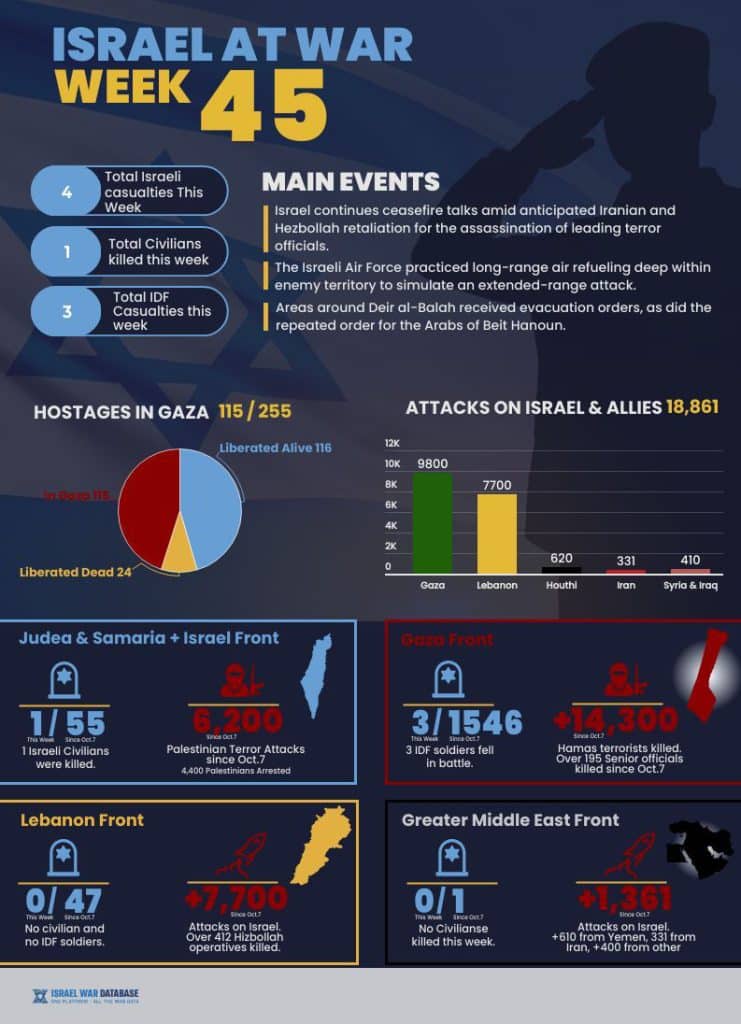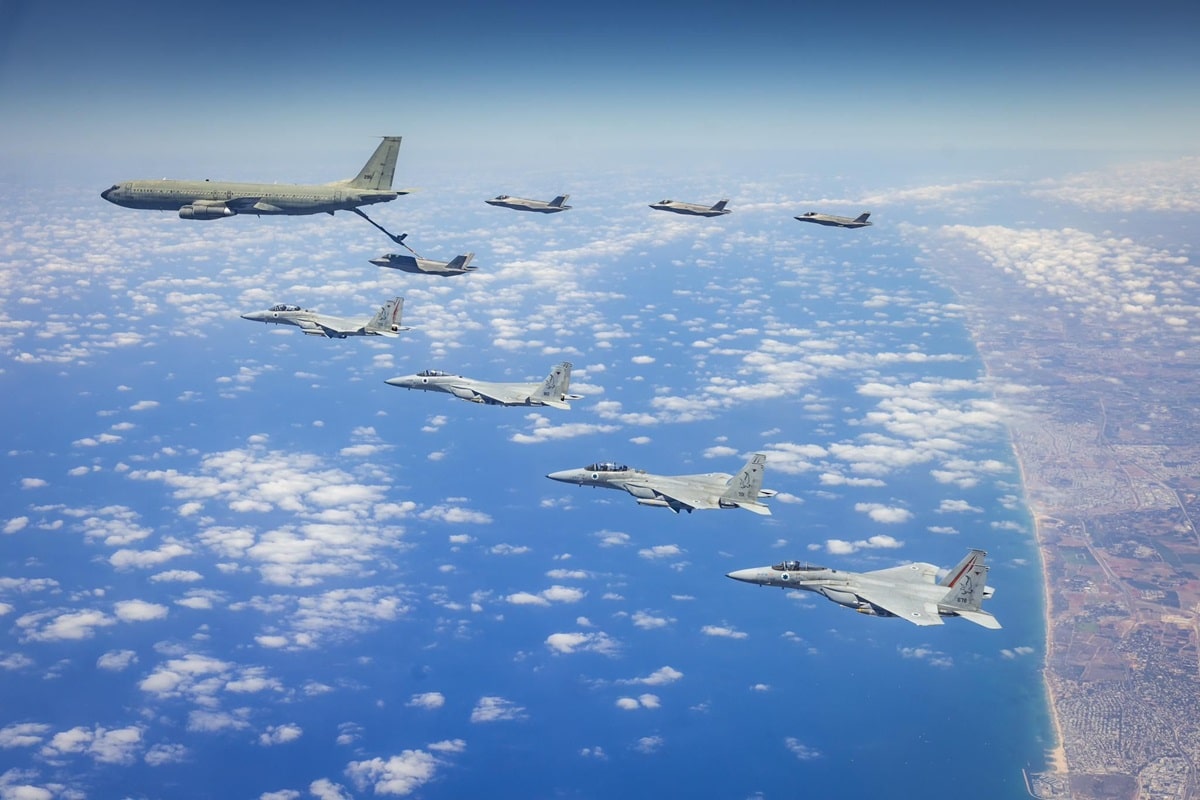
Overview
- Iran’s Foreign Minister-designate Abbas Araghchi stated his intention to pursue a “risk management” policy with the U.S. and constructive relations with the European Union. The new leadership under President Masoud Pezeshkian aims to renew the nuclear agreement with the West.
- It was announced that the Yahalom unit and the 605th Engineering Battalion have destroyed 50 tunnels in the Rafah area over the past month.
- On Thursday, representatives of Israel, the U.S., Egypt, and Qatar met to discuss a hostage deal and a ceasefire. Officially, Hamas did not send representatives to the meeting, but its representatives in Doha met with Egyptian and Qatari representatives. Hamas seemed to be striving to get off the ledge by converting its refusal to show up by making conditions to do so.
- The Lebanese army announced the recruitment of 6,000 new soldiers to implement Resolution 1701 amidst Amos Hochstein’s visit to Lebanon.
- Israel has communicated to the U.S. and European countries that any Iranian attack would provoke a retaliatory strike inside Iran, possibly on nuclear facilities.
- State Antony Blinken announced the approval of a $20 billion arms deal—the largest between the two countries.
- The IDF is establishing new defense lines in the Golan Heights, reinforcing old engineering obstacles like stone piles. In southern Syria, thousands of Iranian-backed Shiite fighters are ready to attack Israel alongside Hezbollah if ordered by Iran, potentially opening a full-scale war front.
International
- In Moscow, Palestinian Authority President Mahmoud Abbas met with Russian President Vladimir Putin who committed to increase humanitarian aid to Gaza and support the establishment of a Palestinian state.
- On August 12, the leaders of the U.S., UK, France, and Germany issued a joint statement urging Iran to withdraw its intent to attack Israel and expressed their support for Israel’s defense against such an attack.
- Israel has communicated to the U.S. and European countries that any Iranian attack would provoke a retaliatory strike inside Iran, possibly even the nuclear facilities, regardless of whether the Iranian attack causes damage.
- Credit ratings agency Fitch downgraded Israel’s credit rating to “A” from “A-plus”, citing worsening geopolitical risks as the war in Gaza drags on, and kept the rating outlook negative, meaning a further downgrade is possible.
- Israeli Foreign Minister Israel Katz met with the foreign ministers of France and the UK during their brief visit to Israel. Katz emphasized that if Iran attacks, Israel expects the coalition to join not only in defense but also in an offensive against significant targets in Iran.
Gaza Strip
Diplomatic
- In Gaza, Hamas met with representatives of three other Gaza-based terrorist factions, to ensure a united front demanding the full withdrawal of the IDF, the promise of a complete prisoner exchange, the entry of humanitarian aid, a reconstruction plan for Gaza, and reform of the Palestinian Authority.
- Senior U.S. officials told the NYT that the IDF has achieved all that it can in Gaza, and cannot completely defeat the terrorist organization. They made the statement while admitting that they were previously wrong in underestimating the IDF’s capabilities in the region, such as misdiagnosing the complexity of operating in Rafah and evacuating civilians; their assessment of the number of IDF casualties that the ground campaign would generate;, and their overestimation of Gaza civilian casualties that were the result of IDF operations. This statement, appears to be an American attempt to pressure Israel into accepting a premature ceasefire and hostage deal.
- Washington approved a $750 million deal to sell 10,500 bombs to Saudi Arabia (to be used against Iran and the Houthis in Yemen if necessary).
US-Israel
- The missile submarine USS Georgia is en-route to the Middle East, along with the aircraft carrier USS Abraham Lincoln and its strike group, equipped with F-35 jets. Following a conversation between Defense Secretary Lloyd Austin and Israeli Defense Minister Yoav Gallant on August 10, a squadron of F-22 aircraft arrived in the Middle East on August 8. The U.S. is determined to intercept any ballistic or cruise missile launched by Iran or its proxies towards Israel.
- Israeli Defense Minister Yoav Gallant expressed gratitude to the U.S. for its security cooperation, and Secretary of State Antony Blinken announced the approval of a $20 billion arms deal—the largest between the two countries. The deal includes air-to-air missiles, nearly 100,000 different shells, armored vehicles, and up to 50 F-15 aircraft to form a new squadron for the Israeli Air Force. Israel will receive these between 2026 and 2029 as part of a long-term force-building strategy, but the announcement aims to send a message of unity between Jerusalem and Washington to deter Iran from attacking.
Operational
The Hamas’ Internal Security mechanism has increased the executions and torture of Palestinians in Gaza on the slightest suspicion of collaboration with Israel, especially after the elimination of Deif and Salameh. Hamas is very concerned about the appearance of “moles” within the terrorist organization providing information that lead to the assassinations.
Gaza City and Northern Gaza
- The terrorist factions in northern Gaza are maintaining a few hundred fighters hidden among the civilian population. These fighters take control of food trucks entering the north and distribute the humanitarian aid, using it as leverage over the population. They recruit terrorists from the local population, work to produce weapons, set up new workshops, or organize underground. Targeted assassinations in the north, alongside daily brigade-level raids aimed at destroying terrorist infrastructure and killing operatives, are gradually eliminating these resistance pockets. The current situation serves as a reminder of why Israel is adamant not to allow terrorists to return north, even during a ceasefire, as they would be used as a recruitment pool and human shields. For months, the IDF has been focused on destroying resistance pockets in the north. While the intensity of the fighting has decreased since the battles in Jabalia in May, Sajaiya in June, and Tel al-Hawa in July, it continues to be significant.
- In a strike on Daraj Tuffah, approximately 38 terrorists were killed. The location served as a gathering and organization point for two of the strongest terrorist factions in Gaza.
Central Camps
- Satellite images reveal that most areas have been cleared of infrastructure, with systematic destruction of buildings throughout the region. Residents of the Al-Qarara neighborhood were instructed to evacuate following rocket launches from their area.
The Al-Qarara neighborhood is the last remaining area before the operation is completed.
- Hamas launched two rockets with a range of 90 km towards Tel Aviv from Bani Suheila in the humanitarian zone. Three hours later, the IDF ordered the evacuation of Bani Suheila’s residents in preparation for a military operation, sending a message to the local population that any rocket fire will lead to their displacement.
- Terrorists have been seizing food trucks as they approach the humanitarian area, using them as cover for attacks.
Rafah
- The Yahalom unit and the 605th Engineering Battalion have destroyed 50 tunnels in the Rafah area over the past month.
- In recent days, Givati Brigade fighters have killed 100 terrorists in Rafah, primarily in the Shabora neighborhood.
Hostage Deal
On Thursday, representatives of Israel, the U.S., Egypt, and Qatar met to discuss a hostage deal and a ceasefire. The key issues on the agenda are the Philadelphi Corridor and the refusal to withdraw from it, the Nezarim Corridor and a monitoring mechanism to prevent the movement of militants northward, control over the Rafah crossing, and a list of 33 hostages alive who will be released in the first stage of the deal. Officially, Hamas did not send representatives to the meeting, but its representatives in Doha met with Egyptian and Qatari representatives.
- The Chief of Staff evaluated the dismantling of Hamas based on the number of terrorists killed and the amount of infrastructure destroyed, emphasizing the need to demolish everything to prevent the rebuilding of new infrastructures. He noted that military pressure is necessary for the release of hostages and that in the event of a temporary withdrawal from the Philadelphi Corridor, the IDF could quickly regain control if needed.
- The Prime Minister’s Office released a statement rejecting Hamas’s accusations that Israel is responsible for the stalled negotiations by adding new demands. The statement clarified that Hamas added 29 demands and that Israel is unwilling to compromise on critical issues such as control over border crossings or maximizing the number of released hostages, as well as the exile of some security prisoners.
Lebanon
Operational
- The Israeli Navy conducted a defense drill to protect the maritime arena in the north of the country against attacks on maritime infrastructure such as gas rigs or the Haifa port.
- Hezbollah launched several rockets causing damage in Kiryat Shmona. The Israeli Air Force responded by striking terrorist infrastructure in southern Lebanon, destroying at least one rocket launcher and killing two terrorists.
- In recent days, the IDF and police have strengthened defense in northern communities, preparing for the possibility of a Hezbollah invasion with the Radwan Force.
- The Chief of Staff approved operational plans for various fronts in anticipation of an expected attack by Iran and Hezbollah.
- The 646th Brigade, known as the “Mountain Foxes,” which participated in maneuvers in Gaza, completed drills last week simulating a ground incursion into Lebanon.
- On Monday evening, IDF Spokesperson Hagari issued a statement to the media, announcing that aerial patrols over Lebanon had been intensified to identify and eliminate threats immediately before any attack. He emphasized that every threat from Israel’s enemies is taken seriously, and the IDF is ready to strike in real-time, effectively preventing the expected attack by destroying launchers at the moment of firing.
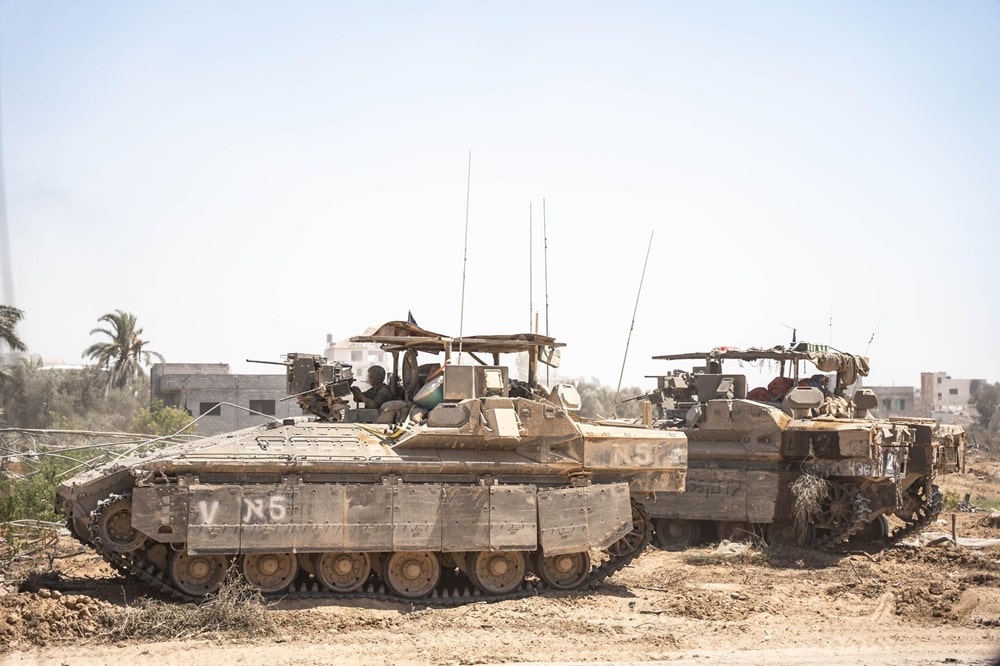
Defense Preparations in the Golan Heights
The IDF is establishing new defense lines in the Golan Heights, reinforcing old engineering obstacles like stone piles. The Bashan Division is creating a drone unit to monitor activities in the demilitarized zone. The Air Force and Artillery Corps regularly strike southern Syria, especially in the demilitarized zone, to prevent Hezbollah’s entrenchment. The area has been reinforced with new rules of engagement that allow shooting at the legs of anyone approaching the border fence. In southern Syria, thousands of Iranian-backed Shiite fighters are ready to attack Israel alongside Hezbollah if ordered by Iran, potentially opening a full-scale war front.
Diplomatic
U.S. Special Envoy Amos Hochstein arrived in Beirut to attempt de-escalation and ensure that a ceasefire in Gaza would lead to a ceasefire on the northern front. The Lebanese army announced the recruitment of 6,000 new soldiers to implement Resolution 1701, which aims to prevent Hezbollah’s presence south of the Litani River. There is speculation that cooperation with the U.S. military may be involved, despite the risks of confrontation with Hezbollah.
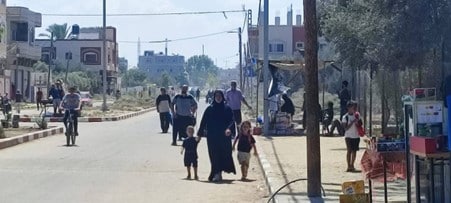
Judea and Samaria
- Palestinian Authority President Mahmoud Abbas delivered a speech to the Turkish Parliament in Ankara, where he announced his intention to visit Gaza along with other Palestinian leaders. Abbas praised Turkish President Recep Tayyip Erdoğan, who has frequently criticized Israel during the ongoing conflict, stating that “Israel is conducting a genocide against our people.” Abbas emphasized that “Gaza belongs to us, and we will not accept any proposal to divide it,” declaring his determination to visit Gaza “even if it costs me my life.”
- A “special source” reported that the Palestinian Authority rejected an Israeli proposal to reopen the Rafah crossing under the management of civilians not linked to Palestinian security forces. The Palestinian Authority insisted on adhering to the 2005 agreement for operating the Rafah crossing and demanded a full Israeli withdrawal from the area.
- In the past week, security forces have arrested 50 wanted individuals and seized NIS 200,000 in terrorist funds.
- In the Palestinian village of Jit in Samaria, dozens of Jewish rioters stormed it, burning vehicles and Palestinian homes, resulting in at least one Palestinian fatality. The IDF, Defense Minister, Prime Minister, and President condemned the events.
- A 12-hour operation took place in the villages of Tubas and Tammun, where heavy gunfire exchanges led to an aerial drone strike, marking the first drone attack in the Jordan Valley. Five terrorists were killed, including three Hamas members, one of whom had been released in a previous prisoner exchange in November.
- A 60-year-old Jewish man entered Qalqilya to repair his car and was shot and critically injured by an 18-year-old terrorist who had been released in the November hostage exchange deal. The terrorist also wounded two other Palestinians who were present at the scene. After a chase, the terrorist was neutralized, and his M-16 weapon was confiscated.
- In a terrorist shooting attack in the northern Jordan Valley a 23-year-old Israeli was killed. Another civilian was moderately injured in the attack.
- In Hebron, two terrorists preparing a car bomb suffered a “work accident”, leading to the vehicle’s explosion and their injuries.
Iraq and Syria
- Several Shiite militias in Iraq declared their readiness to attack U.S. bases in the country without limitation. After a conversation between U.S. Secretary of State Antony Blinken and Iraqi Prime Minister Mohammed Shia’ Al Sudani, the militias refused to limit their attacks on Israel, threatening that any American intervention would lead to assaults on U.S. bases in Syria and Iraq.
- Turkish Foreign Minister Hakan Fidan announced that Turkey and Iraq have signed a memorandum of understanding on military and security cooperation, and counter-terrorism efforts. Relations between the two countries have improved since last year, when they agreed to hold high-level security talks. The relationship entered a new phase after Turkish President Erdoğan’s visit to Baghdad in April, where he stated that ties had advanced to a new level.
Iran
Awaiting an Iranian Response
Over two weeks have passed since the assassination of Haniyeh in the heart of Tehran, and Iran has not yet responded. The Institute for the Study of War claims it is planning an “operational surprise” aimed at penetrating Israel’s air defense system and causing damage (the attack will be coordinated with its proxies). On August 14, Iran’s Supreme Leader Khamenei stated that according to the Quran, any withdrawal that is not tactical will lead to divine wrath, implying that Iran must respond to Israel after the assassination of Haniyeh. The U.S. reportedly offered to renew the nuclear talks with Iran attack in exchange for scuttling the impending attack against Israel, but Iran rejected the proposal. On August 15, John Kirby said Iran might attack with little or no warning, while Biden continues to hope that a ceasefire with Hamas will lead to regional de-escalation.
Alongside threats from Iran’s Supreme Leader Khamenei and the Revolutionary Guards, Iran’s Foreign Minister-designate Abbas Araghchi stated his intention to pursue a “risk management” policy with the U.S. and constructive relations with the European Union. The new leadership under President Masoud Pezeshkian aims to renew the nuclear agreement with the West, improve trade and exports, and lift at least some sanctions to strengthen Iran’s economy. This introduces the possibility that Iran might limit the scale of its attack.
Tense Meeting Between Iran and its Proxies in Tehran
According to the Kuwaiti, a tense meeting took place in Tehran between Iran’s Revolutionary Guards and representatives of Hezbollah, Hamas, and the Houthis. The proxies, feeling pressured, demanded an immediate and comprehensive attack by all parties, including Iran. However, the Iranians argued that such an attack could severely harm Iran and ultimately benefit Israel. The meeting ended in disagreement, with some participants leaving abruptly.
Hezbollah and Hamas representatives had pushed for a wide-ranging and sustained campaign targeting Israel’s infrastructure, security, military, and economic assets, as well as civilian areas, with the goal of forcing Israelis to live in shelters for an extended period. A Hamas representative stated that if Iran is willing to bear the consequences of assassinating Israeli Prime Minister Benjamin Netanyahu in retaliation for the killing of Ismail Haniyeh, Hamas would support such a policy. However, if Iran’s goal is to target lower-ranking figures, Hamas would not agree.
This marks the first explicit call for an assassination attempt on the Israeli Prime Minister as a response to the killing of Haniyeh, indicating a shift from targeting civilians or strategic sites (such as the Dimona reactor or Haifa’s refineries) to focusing on a high-profile Israeli figure.
- Iran’s air and naval forces completed a defense drill against attacks on its territory, including in the Caspian Sea to counter a potential aerial assault from Azerbaijan.
- Three senior Iranian officials said that,.only a ceasefire deal in Gaza stemming from hoped-for talks this week would hold Iran back from direct retaliation against Israel for the assassination of Hamas leader Ismail Haniyeh on its soil
- The opposition-linked Iranian news channel “Iran International,” based in London, reported a significant cyberattack against Iran’s Central Bank and other financial institutions, causing widespread disruptions in the country’s banking system. According to the report, this could have been the largest cyberattack ever directed at Tehran.
- A new Google report reveals that an Iranian-linked cyber unit, known as “APT42,” targeted former senior IDF officials and a high-ranking executives in the aerospace sector. The hackers used phishing emails posing as journalists seeking comments on recent airstrikes in Gaza. The report also indicates that the hackers impersonated real researchers from the Brookings Institution and the Washington Institute for Near East Policy.
- A senior official from a mediating country reported that Qatari Prime Minister Mohammed bin Abdulrahman Al Thani informed Iranian leaders of positive developments in the negotiations between Israel and Hamas. He suggested that Iran and Hezbollah e reconsider any attacks on Israel that might jeopardize the negotiations.
- The Israeli Air Force conducted an aerial exercise involving long-range refueling within enemy territory. The exercise sent a clear message: Iran could become a target in any regional escalation.
Global Terrorism
- The Taliban held a military parade to mark the anniversary of the “liberation of Afghanistan from the American occupier” at Bagram Airbase, which was the largest U.S. airbase in Afghanistan. The parade included American military equipment that was seized by the Taliban following their takeover of Afghanistan.
The country became a breeding ground for terrorism. The Taliban government now collaborates with Al-Qaeda, while ISIS has also established a presence in the country, operating its most lethal branch, ISIS-K.
